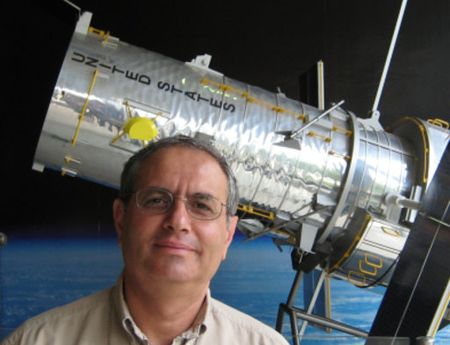
As part of this year's International Astronomical Union Symposium, Vladimir Airapetian (American University, Washington, DC, USA) will deliver a lecture entitled 'The Intimate Life of Giant Stellar Eruptions and Signatures of Habitable Worlds'. The event will be held in the JU Auditorium Maximum at ul. Krupnicza 33.
Our nearby star, the Sun, is the sole source of energy for all life on Earth and a source of inspiration for poets and worshippers. In the recent past, our Sun has surprised us with giant magnetic storms which, if occurred today, would cause a devastating impact on various infrastructures on Earth. In this lecture, ther attendees will be taken on a journey to introduce giant solar and stellar explosive phenomena in order to understand a greater diversity of physical processes operating on the Sun and Sun-like stars of different ages.
We will start with the Sun as a unique laboratory to explore the inner workings of hundreds of billions of stars in the Milky Way galaxy. Is the Sun a unique star or an 'average Joe'? How do solar and stellar explosions affect climates and habitable environments of early Earth and terrestrial exoplanets? The answers to these questions can open an avenue to address a grand question of modern science: Is our planet an average rocky planet or a remarkable rocky body teaming with life, and an outlier in the Universe? What physico-chemical processes are required to make a planet habitable? Vladiir Airapetian will discuss these fundamental questions from a holistic viewpoint by connecting the dots between astronomical observations of solar and stellar eruptions, theoretical and laboratory studies of their impacts on planetary evolution. These studies will pave a way for searching for signatures of habitable worlds with the James Webb Space Telescope and the upcoming Habitable Worlds Observatory.
Admission is free, but it is necessary to register by e-mail at popular-lectures@oa.uj.edu.pl
Vladimir Airapetian is a Senior Astrophysicist at Heliophysics Science Division (HSD) /NASA’s Goddard Space Flight Center, Research Professor in Residence at American University, Washington, DC and Distinguished Professor at Kyoto University. He is a Principal Investigator of NASA NExSS project “Mission to Young Earth 2.0”, NASA Exobiology project on initiation of life on early Earth and Mars, NASA’s TESS, NICER, HST, XMM-Newton and Swift project "Evolving Lives of Young Suns", member of International Space Science Institute, NExSS and Prebiotic Chemistry and Early earth Environments (PCE3) NASA Astrobiology Research Coordination Networks. Prof. Airapetian is also a member of leadership team of Sellers Exoplanet Environment Collaboration (SEEC) team. He is leading an interdisciplinary team of heliophysicists, astrophysicists, planetary scientists, chemists and biochemists from NASA Goddard, University of California at Berkeley, University of Colorado at Boulder, Lockheed Martin Space Laboratory, NASA Langley, Kyoto University, JAXA and Tokyo Tech to understand how extreme space weather events from the active stars form and affect physics and chemistry of exoplanetary habitability. Vladimir Airapetian obtained his Bachelor in Science with major in Physics from the Yerevan State University and his PhD in theoretical astrophysics from Byurakan Astrophysical Observatory in Armenia. He has over 25 years of experience in theoretical astrophysics, heliophysics and astrobiology. Prof. Airapetian specializes in the MHD modeling of solar and stellar winds, extreme coronal mass ejection events from the current and early Sun and their effects on Earth’s magnetosphere, ionosphere and thermosphere. His latest activity includes the application of state-of-the-art multidimensional heliophysics models to simulate environments of active stars and the young Sun analogs to understand their impacts to the atmosphere of early Earth and Mars and rocky exoplanets. These studies laid the foundation for the concept of initiation of biological molecules on early Earth and possibly young exoplanets and resolution of the Faint Young Sun’s paradox. These concepts are currently under study in his Exoplanetary Particle Irradiation Chemistry (EPIC) Lab at NASA GSFC.

